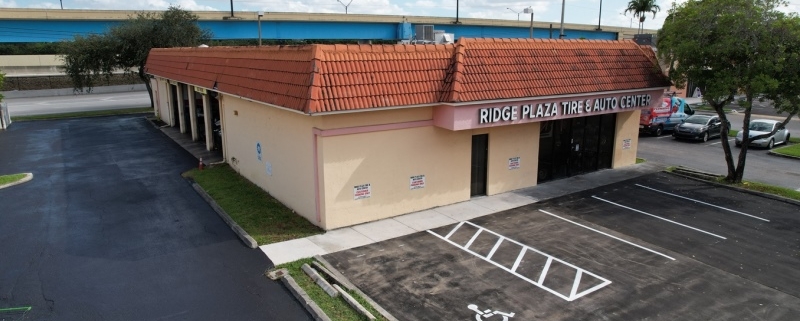By Mark Hinkins, CCIM, FRICS | President-SperryCGA
Recessions always seem to catch people by surprise — even though lots of supporting evidence indicates they’re forming and proves they’re cyclical. This time around, with the pandemic’s work-from-home routine adopted by many companies, commercial real estate is being deeply tested.
The post-COVID-19 recession may already be here, though it may only become more clearly visible by the middle of next year. Commercial real estate values will start falling as liquidity goes out of the market. In preparation, brokers and agents must adapt their business today, so they can stay profitable during the next 18 to 36 months. Here are seven time-tested approaches for recession-proofing your real estate business and a glimpse into the future of our industry.
Pick a Winning Side
Any real estate market contains these four pillars: sellers, buyers, tenants, and landlords. You’re trained to think how to represent one of these factions as best you can, but during economic downturns, it’s a matter of who you represent, because knowing which side to represent amid changing market conditions is how the agile brokerage adapts, follows the money, survives, and flourishes.
If you represent sellers, show them how commercial real estate values historically dropped following stock market corrections. If it’s buyers, shift their mindset to see a recession as a friend — an opportunity, as growth happens, paradoxically, when buying and not selling. If it’s tenants, assess the impact of the lease based on your clients’ expenses and work policies. Finally, if it’s landlords, take stock of their expenses and exposure to lease defaults.
If you’re a real estate investor, stock up on cash and be prepared to buy. It’s true that prime rates aren’t favorable right now, due to the federal government’s desire to combat a 40-year high in inflation. But remember that you can always renegotiate and refinance down the road. Having something to refinance is better than having nothing — and it’s better to have a tenant to renegotiate with later than having empty space.
Finally, lenders must avoid dealing with empty spaces. Some buyers see this as an opportunity, others as a problem. Look at the reserve budget because the costs of services, construction, and material go down during recessions — and it might just be the best time for the borrower to fix the building. Shifting your perspective on repairs in the dip — when labor and materials are cheap and selling or refinancing at peaks is a game-changer — because you’ll ultimately enjoy better-term refinancing or high-profit sales.
Having something to refinance is better than having nothing — and it’s better to have a tenant to renegotiate with later than having empty space.
Accountability, Ethics, and Community Outreach
We live in a deeply divided nation. During this time, take responsibility for your actions; define your approach to ethics, honesty, and transparency; and seek to foster a culture where it’s safe to share and voice opinions. Providing knowledge or income isn’t enough in today’s market because clients pick those whose values align the most with their own. This also means staying connected and giving back to your community during hardships, not only in monetary ways, but also with empathy and education.
Discipline and Education
Professional agents adapt and lead in times of change, and entrepreneurial agents excel at this, especially those who own and operate their own brokerage firms. Slowing markets require commitment and perseverance, and it’s in times of foggy terrain when people look for seasoned navigators. Helm your vessel by demonstrating that your agents are the most trained, educated, and knowledgeable in the industry. Help them brand themselves, because client relationships endure throughout all market cycles.
Fiscal Accountability
Be nimble and control your operating cost — but never cut your services or marketing spend during recessions. Ensure your company structure leverages the value of investment and technology, while providing your affiliates access to tools, training, education, and technology. A value-based affiliation allows agents to operate with higher profit margins, keep more money in their pocket, and access more capital to invest in their businesses and household.
Collaboration and Affiliations
The 1991 and 2008 recessions proved that agents stranded without affiliations are by themselves as lone rangers with low chances of survival, let alone success. Clients are unlikely to go with generic brokerages when compared to recognized and trusted names. It’s imperative to them, when market conditions are challenging, that they’re following someone who can successfully liquidate their assets at a fair price, if need be. Often, it’s not even a question of dollars and cents — they’re looking for peace of mind and certainty, two priceless commodities in uncertain times.
During recessions, when the buy-side goes away, is when you’ll need to be affiliated to win listings. When choosing a branded name, seek a regional or national platform providing a collaborative environment that fosters goodwill, a cooperative spirit, and strong alliances, yielding more recognition, increased leads, and more income. As the proverb says, “If you want to go fast, go alone; if you want to go far, go together.”
Diversification of Services
Putting all your eggs in one basket is like building your own guillotine with a recession being the executioner. It’s important to expose your client’s portfolio to all asset classes, including to Class A properties in prime areas. Additionally, you can diversify your income by offering specialty products like consulting services on debt restructuring, exit strategies, and acquisition formulas.
Technology
Commercial real estate has gone through a catching-up period after lagging behind other industries more open to tech adoption. But, if a decade ago, you bent your ear to the ground, you might’ve heard the train of digital innovation coming toward CRE. Today, even with earplugs in, you can feel the gravel beneath your feet vibrating and see the smoke coming out of the prop-tech locomotive.
A decade ago, approximately 75 proptech startups raised $220 million in venture capital. Fast forward to 1Q2022, and VC poured $4 billion into the sector. In 1H2022, VC investments in private real estate tech companies topped $13.1 billion, outperforming the global venture capital market, according to GlobeSt.
Putting all your eggs in one basket is like building your own guillotine with a recession being the executioner.
Looking forward, the quality and ease of 3D scanning and augmented reality in the sector will skyrocket, while attaining such services will cost drastically less. These trends will enable medium-sized brokerages to pierce the veil of exclusivity and reach clients from outside their limited ZIP code. Proptech will also greatly enhance an agent’s ability to represent a client’s best interests in marketing the property, while also giving the buyer or the tenant unique insight into the property, allowing them to make an informed decision before ever stepping through the front door.
But proptech will extend beyond photos and aerial videos for marketing and sales teams. It’ll rectify the construction, property management, and insurance sub-sectors, with its advantages mostly felt in the property inspections sector. It’ll allow property managers and owners to seamlessly track, record, and weave the condition of the property into stats readily available and accessible for limited partners, bankers, and insurance agencies.
Recessions aren’t easy. Learning how to leverage such times will be crucial for you and your team. Pick the winning side, be ethical when you do so, give back to your community, and educate your agents. Diversify your services, portfolio, and technology offerings. And remember: While technology changes the world, the commercial real estate market is, and always will be, about developing personal relationships across the board.
Source: CCIM








 “As a foreign investor without a US residence, it was extremely difficult to find a lender willing to make the loan even with 50% down,” explained Osborne. “Ultimately, we were able to obtain a first mortgage with the assistance of Manuel Huerta of Interamerican Bank.”
“As a foreign investor without a US residence, it was extremely difficult to find a lender willing to make the loan even with 50% down,” explained Osborne. “Ultimately, we were able to obtain a first mortgage with the assistance of Manuel Huerta of Interamerican Bank.”

